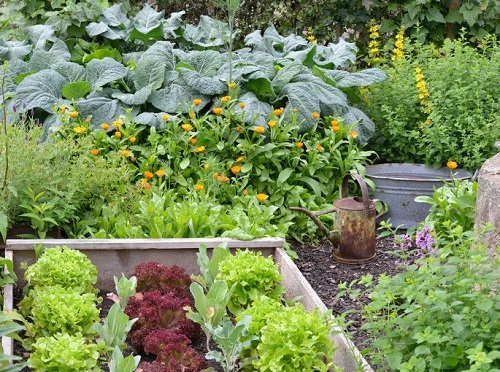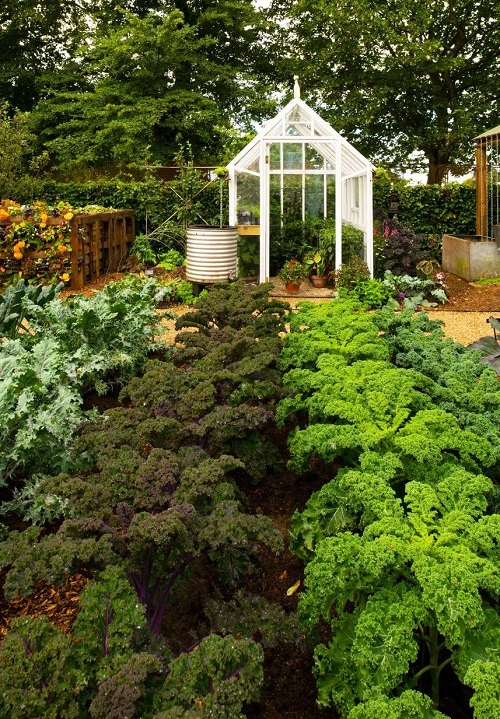Do you know what No Dig Gardening is and how can you use it to your advantage? If not, then keep on reading!
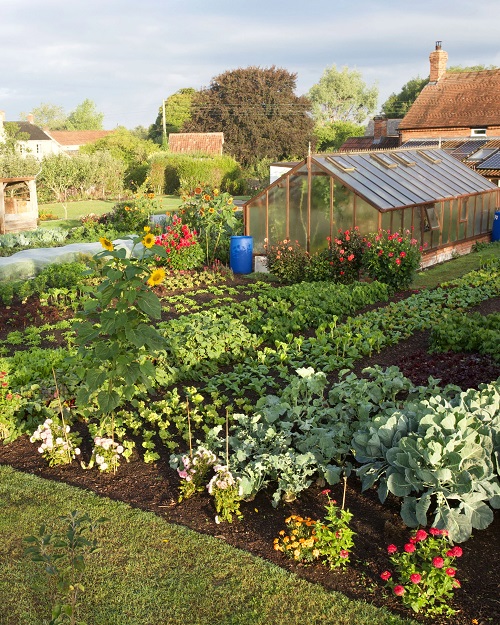
No Dig Gardening – a method that not only saves your back from the strenuous task of tilling but also enhances your soil’s fertility, reduces the need for constant watering, and practically eliminates the persistent problem of weeds—all while being environmentally friendly! Scroll down to discover the art and science of this game-changing technique!
How to Get Free Plants and Seeds | 12 Frugal Gardening Tricks
What is No Dig Gardening?
No Dig Gardening is an organic horticultural technique designed to minimize soil disturbance and preserve its natural structure. Unlike traditional gardening practices that involve tilling or turning over the soil, No Dig Gardening focuses on adding layers of organic material on top of the soil surface.
These layers gradually decompose, enriching the soil and creating an ideal environment for plants to grow. This approach encourages a healthy soil ecosystem, allowing beneficial microorganisms, earthworms, and other soil life to flourish.
How No Dig Gardening Works with Plants
1. Soil Layering
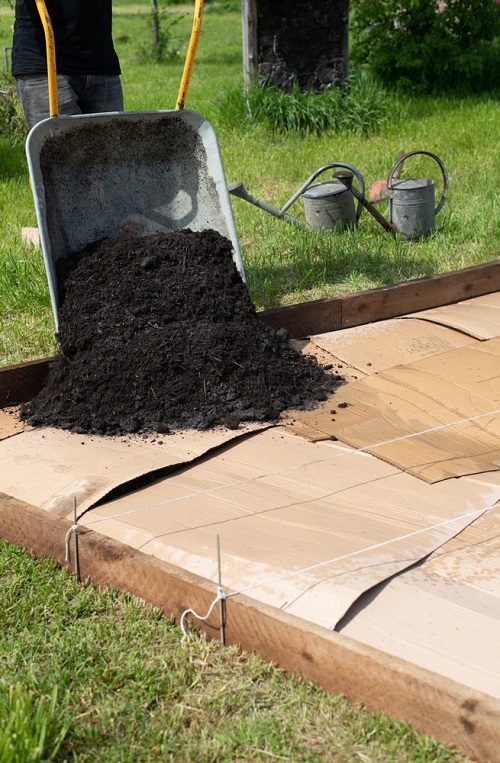
In No Dig Gardening, layers of organic materials like compost, mulch, or straw are added directly onto the soil surface. Over time, these materials decompose, adding nutrients to the soil.
Unconventional Gardening Tricks to Become a Pro Gardener
2. Beneficial Soil Life
By not disrupting the soil, you allow for the natural ecosystem to thrive. Earthworms, beneficial fungi, and microbes work together to break down organic matter and aerate the soil naturally.
3. Nutrient Uptake
The nutrient-rich topsoil created by decomposition offers plants an abundant source of essential nutrients, making it easier for them to absorb what they need for growth.
4. Moisture Retention
Organic layers also help in retaining soil moisture, reducing the need for frequent watering and making the garden more drought-resistant.
5. Weed Suppression
The thick layer of organic matter can act as a natural weed barrier, making garden maintenance easier.
Cheap Gardening Tricks Every Gardener Should Know
Practical Implementation of No Dig Gardening: Growing and Maintaining Plants
- Site Preparation: Start by marking the area where you want to create your No Dig garden. Remove any perennial weeds manually.
- Base Layer: Spread a layer of cardboard or newspaper over the area to suppress weeds and grass. Make sure the pieces overlap to prevent weeds from finding a way through.
- Organic Layers: Add successive layers of organic materials like compost, well-rotted manure, straw, or leaf mold. Aim for a total depth of at least 6 inches.
- Planting: For seedlings or transplants, make a hole through the organic layers down to the soil level and place your plant in it. Fill any gaps with more compost or organic material.
- Watering: Initially, water the plants well to help settle the organic material. Afterwards, the garden should require less watering compared to traditional gardens due to better moisture retention.
- Ongoing Care: Continue to add organic material as a top dressing each season to replenish nutrients and maintain soil structure.
Strange Plant Tricks for Clever Gardeners
Advantages of No Dig Gardening
- Soil Health: The technique encourages beneficial microorganisms, earthworms, and fungi to flourish, ultimately improving soil quality.
- Water Retention: The layered organic matter helps retain moisture, reducing the need for frequent watering.
- Weed Control: Fewer weeds are able to penetrate the layered organic materials, making maintenance easier.
- Less Labor-Intensive: Eliminating the need for tilling saves time and physical effort.
- Erosion Control: The stable soil structure is less susceptible to erosion by wind and water.
- Sustainability: It encourages the use of organic materials, leading to a more sustainable and eco-friendly garden.
No Dig Gardening Tricks
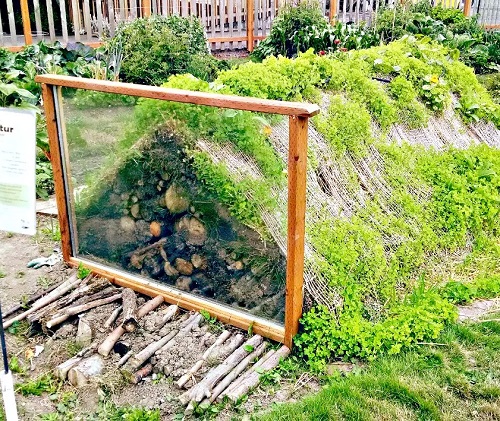
1. Sheet Mulching
Sheet mulching is a No Dig method where you layer organic materials like cardboard, compost, and mulch directly onto your garden bed.
These layers suppress weeds and naturally break down to enrich the soil. There’s no need to till or disturb the underlying soil; you simply build up from the surface.
2. Raised Beds
Utilize raised beds filled with organic matter to create a “no dig” zone, eliminating the need for tilling. They offer excellent drainage, weed control, and easy accessibility.
This creates a fertile and aerated environment where plants thrive without the need for tilling or turning the soil. It’s a win-win solution for gardeners seeking both convenience and productivity.
3. Organic Top Dressing
Organic top dressing is the practice of applying a layer of nutrient-rich organic material, like compost or well-rotted manure, directly onto the surface of your soil. This not only feeds your plants but also improves soil structure and moisture retention.
It’s a quick and effective way to give your garden a nutritional boost without disturbing the soil or plants, making it ideal for ongoing garden maintenance.
Check out some clever gardening tricks to save money here
4. Crop Rotation
Crop rotation without tilling involves changing the types of plants grown in a specific area each growing season. The key is to follow a planned sequence that helps reduce soil-borne diseases and pests while improving soil fertility.
In a No Dig setting, you simply remove the old crop and plant the new one in the same spot, taking care to add a layer of organic top dressing for added nutrients. The soil ecosystem remains undisturbed, yet benefits from the rotating crops.
5. Hugelkultur
Hugelkultur is a permaculture technique where you create raised garden beds by piling up logs, branches, and organic material, then covering them with soil and compost. As the wood decomposes, it becomes a sponge-like reservoir for moisture and nutrients.
In a No Dig approach, you simply layer these materials on top of the ground without any tilling, allowing for a self-sustaining garden bed that improves soil health and reduces the need for irrigation.
6. Polyculture Planting
Polyculture planting involves growing multiple types of plants together in the same space to mimic a natural ecosystem. In a No Dig setting, you simply add new plants alongside existing ones by making planting holes through the organic top layer, avoiding any soil disturbance.
The diverse plant community helps deter pests, improves nutrient uptake, and can even increase yields, all while maintaining the soil’s natural structure. It’s an effective way to maximize garden productivity and health without resorting to tilling.
7. Swales and Keyline Principles
Swales and keyline plowing are permaculture techniques designed to optimize water usage and distribution in the landscape.
- Swales are shallow, contour-based trenches that capture rainwater and allow it to slowly infiltrate the soil. These can be implemented by simply digging the trenches in designated areas, without disrupting the main garden beds
- Keyline plowing involves shallowly cutting the land along natural contours to direct water flow. It would involve minimal surface cutting rather than deep tilling.

